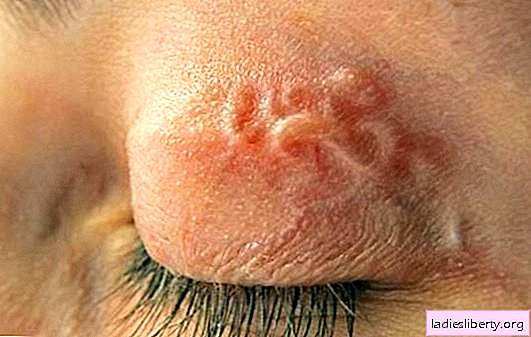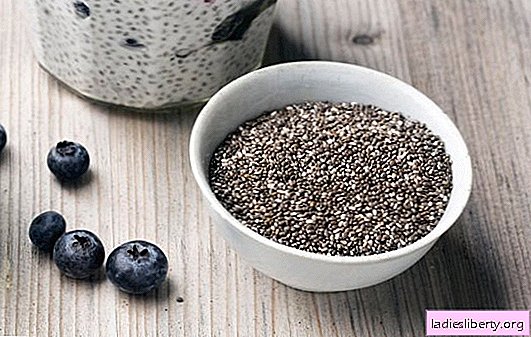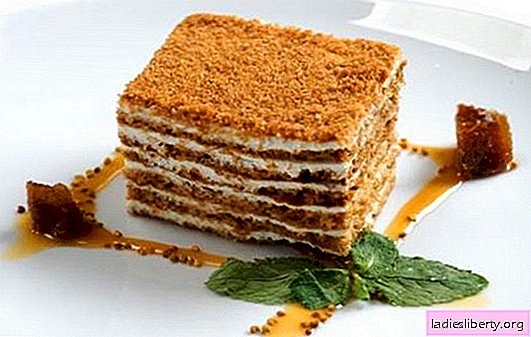
Azalea is an evergreen and plentifully flowering plant, capricious and requiring considerable efforts to grow it at home.
This unusual beauty flower requires special care.
In its natural habitat, the climate is pretty cool, the temperature during flowering does not exceed +12 degrees, with high humidity.
In residential premises, it is very difficult to achieve such conditions, but it is quite realistic.
Azalea propagation at home
Having acquired such a beauty, sooner or later, many gardeners, even beginners, have a desire to purchase another one. And often I want to grow it myself. But, how to propagate such a capricious flower, without damaging it?
There are several methods for propagating azaleas:
• Seeds
This method is considered the most difficult, which is why it is not very common among flower growers. When deciding to grow azalea from seeds, be prepared that most may not germinate. But most importantly, do not forget to create the necessary conditions for her.
Before sowing, it is necessary to choose the right soil. You can buy it already ready, but it may not contain enough nutrients needed by the flower. Therefore, we suggest you compose the soil yourself. To do this, take peat, sand and coniferous land. Make sure that the soil is loose and water does not stagnate in it. Seeds need to be sown not deep, almost on the surface. Then cover the pot with a transparent film and provide them with proper lighting. This will contribute to better germination.

• Dividing the bush
This method is usually used when the plant reaches the age of 3 to 4 years. At this age, it has grown enough, and you will not harm him. You can divide the plant only if it is completely healthy. When dividing, one should also remember that the roots of the plant are very weak and thin, and you must be extremely careful not to damage them.
After dividing the plant into several parts, plant them in low pots (they are best suited for the flower, since the roots of the azalea do not go deep into the ground) and do not forget to carefully feed it.

• Cuttings
This method is the most common, but very troublesome. To propagate azalea in this way, you can only once a year, and provided that the plant is completely healthy. This is best done in the spring, cuttings cut during this period take root perfectly. We cut off the semi-lignified stems (they are excellent for this) 5-9 cm in size. We cut the three lower leaves on them, leaving only 0.5 cm cuttings, the remaining leaves are cut only half. Under the lower kidney we make an oblique incision, after which we process the cuttings with a growth simulator and plant them to a depth of 1-3 cm (according to the 4x4 cm scheme). (The land used is the same as for the seeds). Then cover the planted cuttings with a film.

At a temperature of 25 ° they will germinate and take root in two months. As soon as the growth of shoots begins, we remove the film, and every day we spray and pour them with boiled water, the soil should be constantly moist. After the shoots reach 2-3 centimeters, we transplant them into new pots with coniferous soil. We remove the first buds to allow the flower to grow stronger and gain strength, and after 2-3 months you can begin to form a bush.
• Vaccinated
Any bush of both wild and varietal azaleas is suitable for this method. On the prepared bush, during the period of active movement of the juice (sprouting is more effective during this period), an oblique incision is made, as well as on the branch to be planted (cut stalk from the azalea flower that you want to grow). After making an incision, insert the stalk into an incision on the bush and wrap it tightly with a film. It is necessary to build a small greenhouse above the plant - this will improve intergrowth.
Soil composition for growing azaleas at home
To grow azaleas requires acidic soil. It grows best in heather land - it is very light, loose and quite nutritious. Harvest it in dense thickets of heather. But you can replace it with a mixture of peat and coniferous land (2: 1). Coniferous land is humus from the fallen needles of pine, spruce, larch, and fir. It is light and acidic, but contains few nutrients.
If you decide to buy the finished mixture in the store, pay attention to the composition and date of packaging. This is an important factor for the further growth of your flower. The soil should be fresh, with good additives, and not overdue and lose all its properties, which will bring harm to the plant, and not benefit. However, be careful, even the necessary soil can be varied, there is one that is intended for transplanting, and one that is best used for propagating or sowing seeds. As a top dressing, you can use pine bark, which will oxidize the earth, and moss-sphagnum or charcoal to disinfect the soil. Do not forget about drainage (about 3 cm expanded clay), through it excess moisture will be removed from the ground.
Watering and humidity azaleas at home
A newly acquired flower should immediately be checked for watering. The land in the flower should be moist. In the future, it is necessary to water the flower either from above or from the pallet, and sometimes you can even completely immerse the pot in a container with water, but you can’t abuse the last method, otherwise harm the flower. And after using the immersion method, the flower should not be watered for a long time (at high temperature for about a week).
Check when it is time to water the azalea can be another interesting way. You need to take the flowerpot in your hands, and depending on its weight, see if you need to water it or not. If the flowerpot is light - water it, heavy - no.
Many people make a common mistake when caring for a beauty, believing that the earth should be constantly wet. But this is not so. Your main task is to ensure that the soil does not dry out. Do not abuse watering so as not to harm the flower.
Water azaleas need only soft water! To do this, insist water for several days or use filtered, boiled water is also good. To increase moisture for it, place the flower on a pallet with gravel or expanded clay flooded with water. Most importantly, do not forget to wash the stone from time to time and check for foreign residents who can harm the flower.
In the heat, you can use a moisturizer, then your beauty will be like in paradise. You can spray it, but not during flowering - it will ruin the flowers and buds. Also, to increase humidity, use decorative fountains or place containers next to water.
Azalea Lighting
These whims really like bright lighting, but only in no case direct sunlight. So from the south window the flower should be placed at a distance of at least a meter or cover the window with paper. If you see that the flower has dry tips or red spots, it means that he received burns and the azalea urgently needs to be removed further.
But in winter, on the contrary, it can be very dark, and to fix this, use additional lighting, for example, fluorescent lamps. It is also good to use phytolamps if the flower is in the greenhouse, as they are harmful to health. But the safest lighting is fluorescent lamps, they will give the flowers the necessary amount of light and will not bring harm.
Azalea top dressing at home
The soil, in which azaleas grow well, is quickly depleted, so from time to time it must be fed so that it grows better, and to maintain the life of the flower. But you should not do this constantly, you need to know exactly during what periods the plant requires fertilizers, and when not. For example, in winter the plant is at rest and almost does not grow, so during this period you should not fertilize it and stimulate growth or flowering, this can cause exhaustion and shorten the life of your pet. But in the spring, when the flower begins to wake up and prepare for flowering, it needs to be fertilized to help get the necessary nutrients. Azaleas must be fertilized with nitrogen fertilizing at least once a month. But in the summer, do not be afraid to put your beauty in a thunderous torrential rain, this will provide all the necessary components for good growth.
When choosing top dressing, carefully watch that chlorine is not present there (this is poison for a flower that kills the root). Its overabundance can lead to not very pleasant consequences, so make sure that it is present in minimal quantities. In the summer they are well watered with mineral fertilizers, but during flowering it would be nice to use phosphorus and potassium. If a huge amount of fast-growing shoots appears during flowering, then they must be removed, otherwise they will draw out all the nutrients from the flower, and this will negatively affect flowering.
When it is warm, it is also good to feed flowers with microelements, the best thing for them is iron and magnesium, which are very few in peat soils. The lack of these substances is reflected in the flowers, and they become stunted, and the leaves become yellowish. The leaves of a healthy flower are dark green, glossy and with a metallic tint.
Diseases and pests of azalea
Unfortunately, like all other flowers, azalea is very susceptible to disease and attracts various pests. And if you take into account her capriciousness, then any wrong actions can cause a beautiful woman’s disease.
There are such types of diseases and pests:
• Spider mite. A small insect of red or yellow color, is under the leaves and feeds on their juices. After which they turn gray and fall off.
Control measures. The plant is wiped with a soapy sponge and washed under a warm shower. Regularly sprayed. Often, only these procedures are enough for the pests to disappear. If the azaleas are very much affected by a tick, and regular hydration does not help, Neoron can be sprayed, it kills even the tick larvae.
• Rhododendron bug. They face him most often. This insect is approximately 4 mm long; it leaves small colorless spots on the leaves, but under the leaves it multiplies, laying eggs.
• Grooved weevil. This beetle cannot be overlooked, since its length reaches up to 10 mm, it is black in color. He eats the entire top of the flower, and his larvae also harm the root.
• Mealybug. A tiny pest up to 4 mm tall and very fertile. Usually it can be found on the veins or in the buds and buds. Can be determined by the curvature of leaves and buds.
Control measures. Wipe the plant with a soapy sponge and wash under a warm shower. Spray regularly. With a very severe defeat, the plant can be sprayed with a 0.15% actellic solution (1-2 ml per liter of water).
• Slime plowed. It feeds on the leaves of young plants. Able to destroy it in a few days.
• Black thrips. Black midges that feed on leaves, you can understand their presence by the fact that the leaf begins to turn yellow. Because of them, the ugliness of the flowers occurs.
• Rhododendron fly. Lives under the leaf, its presence can be determined by small bright spots on the upper side of the leaf.
• Greenhouse and Bean Aphid. It feeds on the plant with everything that can and diligently leads it to death.
A number of diseases are also distinguished that negatively affect the entire flower. For example, root rot. Leafs and buds begin to die. The first ones are twisted before falling. It develops at very high temperatures and humidity.
Many diseases affect the condition of the plant. As soon as the leaves begin to change color, the plant begins to wither, or new leaves and flowers acquire an irregular shape, or various spots appear on them, this indicates that either a pest is wound up, or your beauty is sick. To do this, check it for the presence of insects on it, and if there are any, then sprinkle it with special poisons that kill them, but do not harm the flower. If they are not, then look what you are doing wrong.
In most cases, diseases begin to develop due to excessive watering, an overdose of fertilizers or a lack of any substances. So carefully follow the instructions for the use of fertilizers, their expiration date, and do not abuse watering, and your beauty will grow to your pleasure and delight you with beautiful lush flowering.











